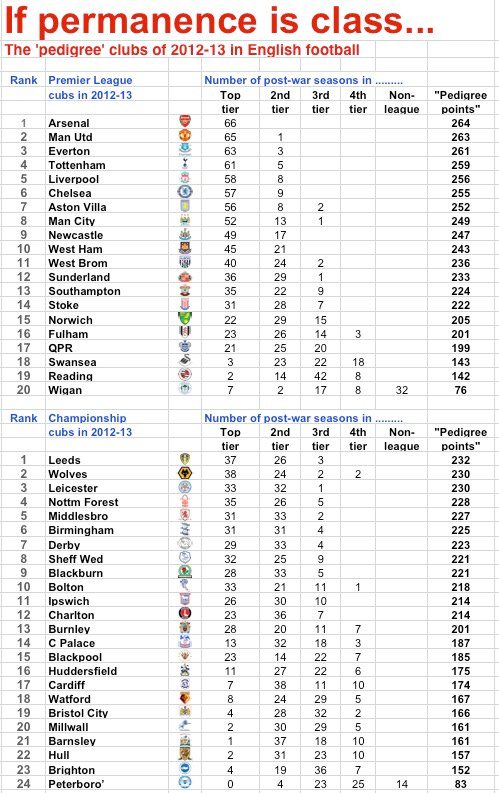England’s ‘pedigree’ teams for 2012-13: Arsenal, Leeds, Coventry and Plymouth
By Brian Sears
15 August 2012
So the Olympic Games are over and football is facing the inevitable brickbats that will come its way ahead of the new season, which begins in England on Saturday.
Of course the beautiful game can learn things from London 2012 and the Olympics as a whole, but let's not forget that the Games are two weeks in four years - and one fortnight in a lifetime on home soil for most Britons - whereas football is most of the year, every year, and has been for well over a hundred years.
It is our national sport, part of our fabric, part of our communities, for better or worse. It has been for a long time, and probably will be ever thus.
ELSEWHERE: World's best paid sports teams
Reflecting the longevity of football in the national psyche, in the tables (scroll below for details) we consider the make-up of the four divisions in English professional football for the coming season 2012-13, and consider which teams within which divisions have the finest 'pedigree'.
By this I mean which have the most sustained presence at the highest level.
Arsenal, famously, are the only club in England who have been in the top division for all 66 post-war seasons to date. (Longer, in fact, but we're counting post-war seasons for this exercise).
Manchester United have been there for 65 of 66 seasons, and they are followed by Everton (63 years of 66), Tottenham (61), Liverpool (58), Chelsea (57), Aston Villa (56), Manchester City (52) and Newcastle (49).
Whether the current vogue is to think of England's 'big six' as United, City, Arsenal, Chelsea, Tottenham and Liverpool, or big seven, eight, or nine by adding Everton, Villa and Newcastle, these numbers show, in fact, that this group have pretty much been the big guns always, all of them in some order or another.
But what of all the other clubs in England? How do they rate?
To find out, we have counted the number of the top-flight seasons for each club, the number of second-tier seasons, third-tier, fourth-tier and non-league, assigning four points for each season at the top, three for each in the second division, two for third, one for fourth and none for non-league.
The four divisions are then sorted as per 2012-13 but ranked within each division by 'pedigree'. (See tables below).
The 'pedigree' teams are Arsenal in the Premier League (264 points), Leeds in the Championship (232 points, enough to get them into 13th in the Premier League), Coventry in League One (219 points) and Plymouth in League Two (157 points).
If the Premier League of 2012-13 were made up of the 20 clubs with the best post-war pedigree, then Stoke, Norwich, Fulham, QPR, Swansea, Reading and Wigan would drop out, and be replaced by Leeds, Wolves, Leicester, Nottingham Forest, Middlesbrough, Birmingham and Derby.
The gap from the top to the bottom among all clubs in 'pedigree points' is as wide as it can be. Arsenal are the only club to have retained top league status over all 66 seasons and thus gain 264 pedigree points. Fleetwood Town, however, are about to experience their debut Football League season and do not qualify for a single pedigree point.
Outstanding achievements are underlined: Wigan at the foot of the Premier League (pedigree-wise) would also be at the foot of the Championship and only Yeovil, Stevenage and Crawley Town would be beneath them in League One.
Clubs currently languishing like big fish in very small pools are also shown up : Coventry, Sheffield United and Portsmouth, pedigree-wise, should be above all the bottom six of the 2012-13 Premier League. And Plymouth, the most historically favoured of current League Two clubs, should be just above the relegation places of the 2012-13 Premier League, and two divisions higher than they are in a composite pedigree league.
.
More from Sears / More on ARSENAL / MAN CITY / UNITED / LIVERPOOL / CHELSEA
Follow SPORTINGINTELLIGENCE on Twitter
Sportingintelligence home page
.




